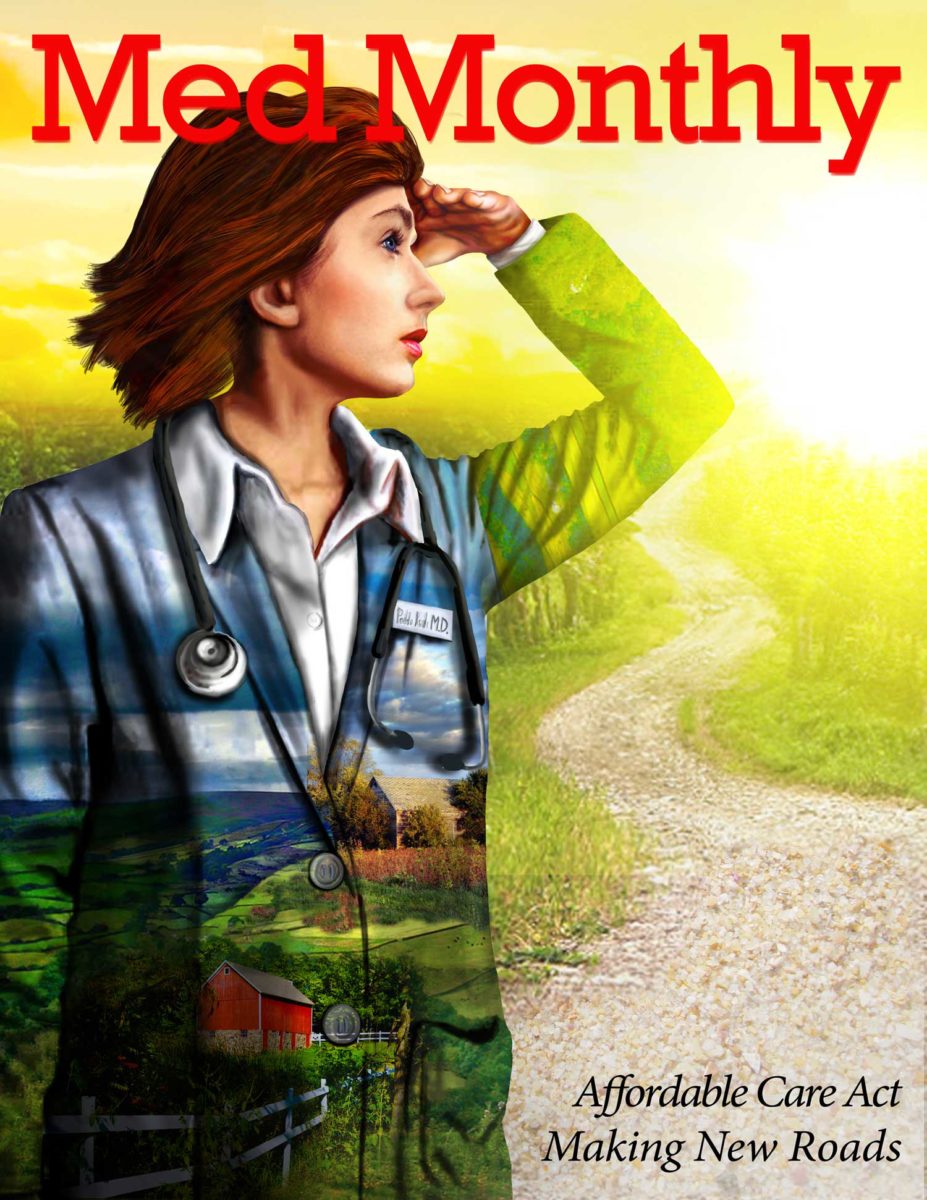
The Pull to the Countryside
Centralized Healthcare
Drawing Physicians to Rural America with the AHA
Written & illustrated by Laura Maaske, MSc.BMC, Medical Illustrator & Medical Animator| e-Textbook Design
This October 1st opened enrollment of the Affordable Health Care Act (ACA), which is the most sweeping social change for Americans since the Social Security Act Roosevelt signed in in 1935. The AMA has praised this event as historic. And with the government taking a stronger control in healthcare, there will be a guiding hand.
One only need look at the news headlines and the Health Provider Shortage Areas (HPSAs) to understand that rural Americans face greater health risks than urban Americans. Only 10% of American physicians practice in rural areas, whereas rural regions compose 25% of the American population.
The ACA offers coverage to millions of otherwise uninsured Americans. Particularly, the change affects 60 million who live in rural areas of the United States. Presently, one out of every five uninsured Americans lives in a rural area, compared to one in six for the population at large. And because of lower income among rural residents compared to urban residents, there will be an even greater need for doctors to an area that has historically suffered a doctor shortage.
With 32 million Americans harnessing new access to healthcare, between 4,307 and 6,940 additional primary care physicians would be needed to accommodate this increase by 2019.
But despite the need for physicians in rural areas, the incentives have remained low. [Tweet “How to movitivate physicians to practice in rural America.”] Physicians in rural areas perform tasks that would be performed by specialists in more urban areas. Call schedules remain a burden in rural areas, with a one in two or one in three call ratio. Educational resources are not available in rural areas to the degree they are in urban areas. Typically, even local physicians who want to practice in rural areas where they grew up must go out-of state to urban centers for residency, which has resulted in less interest among physicians to practice in rural hometowns.
How will the ACA bring physicians to rural areas?
Initiatives of the ACA to increase physician distribution to rural areas:
Increases competition among insurance providers, allowing the Health Insurance Marketplace to lower costs.
Authorizes funding for additional medical residency training programs through the Health Resources and Services Administration (HRSA) and the ACA’s own Prevention and Public Health Fund. Training would preferentially encourage primary care and general surgery. In general, the ACA will offer incentives to physicians for more necessary specializations. Presently, the ratio of primary care physicians is one-third, to two-thirds specialists. In a report completed this by the Congressional Research Service (CRS), this ratio is not in proportion to the health needs of patients.
Allocates money to increase the primary care workforce by training more doctors.
Requires that Medicare-funded residency training slots be redistributed from hospitals that are not using them or that have closed, to hospitals seeking to train additional residents.
Allocates a greater amount of money for scholarships and loans for all health professionals. It relieves the basic need for physicians by training an increased number of physician assistants and nurses.
Expands the number of general staff who work in rural health centers.
Increases the number of nurse-managed clinics at nursing schools where nurses in training treat rural patients.
Subsidizes loan repayment or offers education grants to professionals trained in undersupplied specialties such as pediatrics, mental health, geriatrics, behavior health, and general surgery, in exchange for serving in under-serviced areas.
Plans to increase physician productivity.
Encourages increased efficiency and coordination among all personnel in medical homes, clinics, and hospitals, as well as other care organizations.
Reduces isolation among physicians by offering access between rural centers and colleagues, and by increasing further continuing educational opportunities to rural physicians.
Establishes a National Health Care Workforce Commission to develop economic incentives and grants and contracts for physicians, encouraging greater support of primary care training and greater distribution to rural areas. This includes distributing Residency slots to rural areas. It also encourages physician training in community-based settings to offset the greater orientation toward specialty care in hospital-based residency training. This may be the most important aspect of the new law, as it creates a regulatory commission which will continue to promulgate rules and regulations to improve delivery of healthcare services.
For more information, read the Federal Office of Rural Health Policy report, ?Office of Rural Health Policy Rural Guide to Health Professions Funding?. And for an in-depth definition of ?rural?, visit the USDA Website page defining this term.
As the medical illustrator and editorial artist for Med Monthly, our publisher asked me to illustrate Med Monthly’s November 2013 cover. The Affordable Healthcare Act, with its shift in perspective towards rural America, brought me to wonder what are we looking to? What do we want from this initiative? Health insurance itself is not much more than 100 years old, in the U.S. But if we can accomplish this great aim to offer healthcare more equally to all Americans, urban or rural, we’ll be a fairer place to live, and a little bit closer to our ideals.
For the full article, visit MedMonthly Magazine HERE.
Laura Maaske

?
November 5, 2013
Laura Maaske, MSc.BMC, Medical Illustrator & Medical Animator| e-Textbook Design



